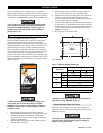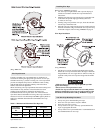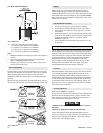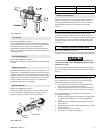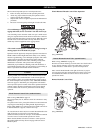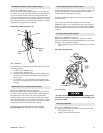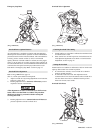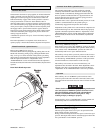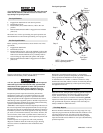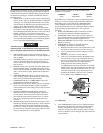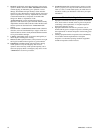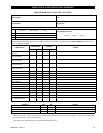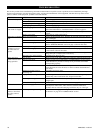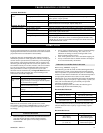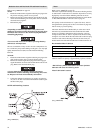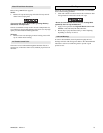
16 MHD56087 - Edition 4
REVIEW COPY 6
-
21
-
02
• To avoid damage to mounting structure and winch, the winch
drum must be stationary and there must be no load on wire
rope during Free Spool operation.
Free Spool Position:
1. Engage drum band brake to lock drum in position.
2. Pull handle (512) out.
3. Rotate handle (512) counterclockwise, 180° to the ‘UP’
position.
4. Release handle. Ensure handle is engaged in slots in detent
plate (514).
The drum is now in free spool. During free spool operations use
drum band brake to control drum speed during wire rope payout.
Non Free Spool Position:
Before operating winch with motor, ensure winch is not in free
spool mode.
1. Engage drum band brake.
2. Pull handle (512) out.
3. Rotate handle clockwise, 180° to the ‘DOWN’ position. This
connects winch drum to outboard upright. If required, band
brake can be released and drum slowly rotated by hand to
assist in lining up output shaft (28) splines with upright.
4. Release handle. Ensure handle is engaged in slot in detent
plate (514).
Free Spool Operation
(Dwg. MHP1322)
INSPECTION
Inspection information is based in part on American National
Standards Institute Safety Codes (ASME B30.7).
WARNING
• All new, altered or modified equipment should be inspected
and tested by personnel instructed in safety, operation and
maintenance of this equipment to ensure safe operation at
rated specifications before placing equipment in service.
• Never use a winch that inspection indicates is damaged.
Frequent and periodic inspections should be performed on
equipment in regular service. Frequent inspections are visual
examinations performed by operators or personnel trained in
safety and operation of this equipment and include observations
made during routine equipment operation. Periodic inspections are
thorough inspections conducted by personnel trained in the safety,
operation and maintenance of this equipment.
ASME B30.7 states inspection intervals depend upon the nature of
the critical components of the equipment and the severity of usage.
The inspection intervals recommended in this manual are based on
intermittent operation of the winch eight hours each day, five days
per week, in an environment relatively free of dust, moisture, and
corrosive fumes. If the winch is operated almost continuously or
more than the eight hours each day, more frequent inspections will
be required.
Careful inspection on a regular basis will reveal potentially
dangerous conditions while still in the early stages, allowing
corrective action to be taken before the condition becomes
dangerous.
Deficiencies revealed through inspection, or noted during
operation, must be reported to designated personnel instructed in
safety, operation and maintenance of this equipment.
A determination as to whether a condition constitutes a safety
hazard must be decided, and the correction of noted safety hazards
accomplished and documented by written report before placing
the equipment in service.
Records and Reports
Inspection records, listing all points requiring periodic inspection
should be maintained for all load bearing equipment. Written
reports, based on severity of service, should be made on the
condition of critical parts as a method of documenting periodic
inspections. These reports should be dated, signed by the person
who performed the inspection, and kept on file where they are
readily available for authorized review.
Wire Rope Reports
Records should be maintained as part of a long-range wire rope
inspection program. Records should include the condition of wire
rope removed from service. Accurate records will establish a
relationship between visual observations noted during frequent
inspections and the actual condition of wire rope as determined by
periodic inspections.
Drum
Engaged
Position
Step 1.
Step 2.
Step 3.
Drum
Free Spool
Position
NOTE: Reverse prodedure
before operating winch.



